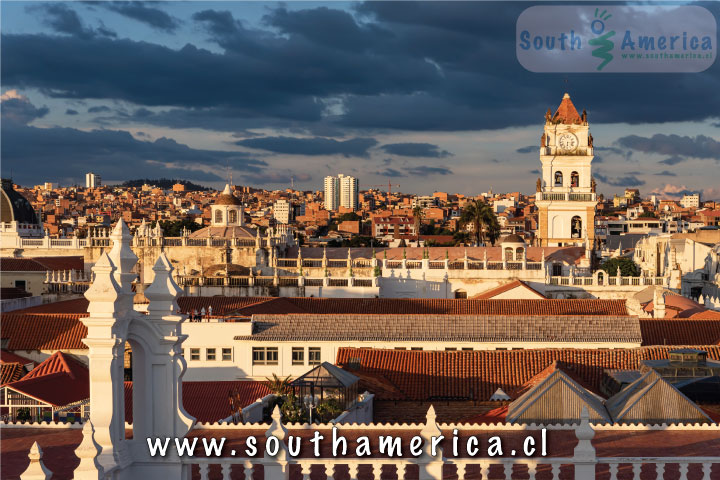Sucre
Bolivia

This city is a go to for all history buffs. Sucre and its people are something of a relic, preserved throughout time, although subject to the harshness of the land. This was once a capital of the Americas, with control over parts of modern day Peru, Argentina, Chile, and Paraguay; where the Spanish conquistadors came to live and thrive off of the nearby silver mines. But when the precious metal ran out and war for independence broke out in many states, much of Sucre's former splendor began to dwindle. Today the beautiful buildings still stand, painted white, contrasting with the dusty hills that surround the small city. It is Bolivia's constitutional capital, where the Supreme Court meets, however most other functions of the government take place in La Paz. The city has been overshadowed greatly by La Paz over the past decades, but it still holds its own subtle charm.
The city has three other names that have been given to it throughout the ages; Charcas, La Plata, Chuquisaca. It is often referred to as the city with four names or the white city, due to its historical buildings.
Sucre was declared a UNESCO World Heritage Site in 1991.
What to Do in Sucre
A visit to the Plaza 25 de Mayo, the colonial heart of the city will start you off near many of Sucre's most important ancient buildings. The Casa de la Libertad (currently a museum where the declaration of independence was once signed in 1825), the Cathedral and several other churches are all located around the plaza. In fact, almost everything is centered around the plaza, including hostels and restaurants.
Convento de San Felipe de Neri: This is one of the most beautiful examples of colonial architecture in all of Bolivia. The highlight is the great view of the rest of the city from the rooftop. There is a guided tour of the interiors if you want to learn more about the religious artwork and building of the church.
Tarabuco: Located just outside of the city there lies a traditional town full of people wearing their native dress. The best time of which to visit is by far Sundays when the town has a huge market open for locals and tourists alike to purchase. Prices can be a bit higher here, as this seems to be the highlight around Sucre, but it is worth a bit of haggling for the woven products, from blankets to ponchos. You can catch a bus there or go with one of the local tours.
You can definitely find some good trekking around Sucre, but be sure that you hire a guide, or at least make sure that you are well prepared with the most up to date maps that are possible, as it can be easy to get lost.
Where to Stay in Sucre
Finding a good hostel in Sucre seems to be a pretty difficult endeavor. Everyone seems to encounter problems with dirty rooms, unfriendly staff, or a general rundown atmosphere. Be sure to give yourself plenty of time when you arrive to find a hostel, and make sure you check out the cleanliness of the bathrooms and the hot water before committing to anything.
We have heard that you should avoid the Backpacker's Sucre Hostel at all costs.
If you found this guide about Sucre, Bolivia interesting or useful, let others know about it.


